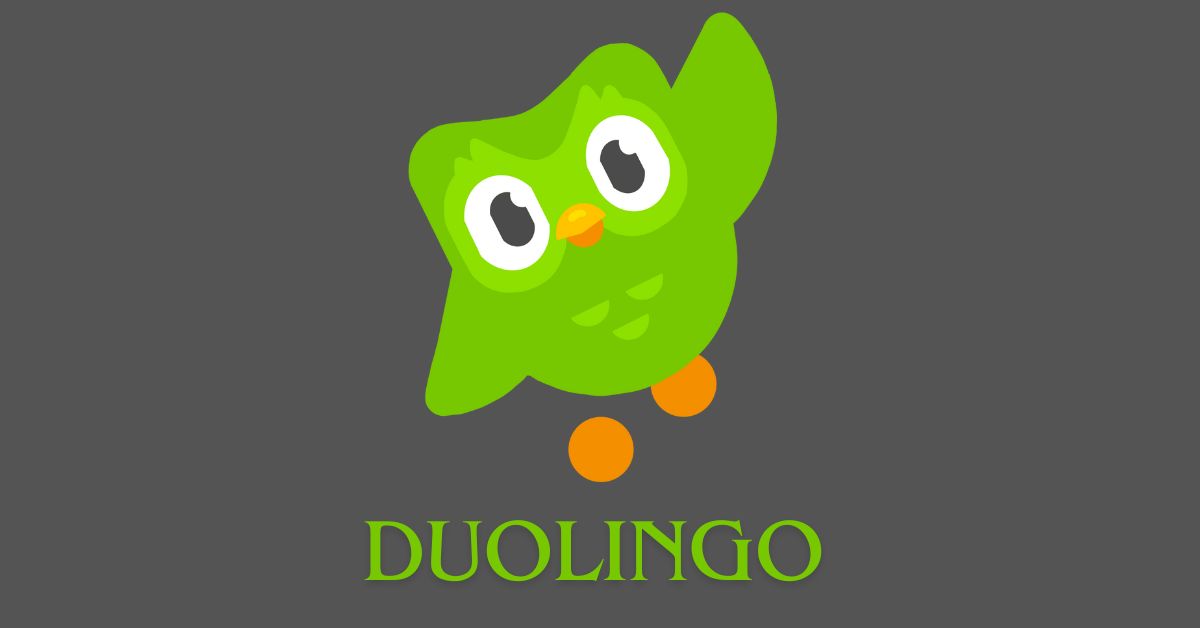Education
Understanding the Costs: PTE vs. IELTS Registration Fees

Preparing for your journey to work, study, or barely interact with people in English-speaking countries often requires a strong command of the English language. Even when you speak and understand English quite well, every educational institution, professional organisations, or immigration authorities require evidence of your proficiency.
That is when two names for English language proficiency tests often come up: the Pearson Test of English (PTE) and the International English Language Testing System (IELTS). Both tests serve as a gateway for immigration, higher education, and professional registration in English-speaking countries. However, one of the primary considerations for test-takers is the cost associated with these exams.
In this blog, we will delve into the registration costs for PTE vs. IELTS, and explore the value proposition of each test to help potential test-takers make an informed decision.
Registration Costs: A Comparative Overview
The registration fees for both PTE and IELTS can vary depending on the country in which the test is taken. Generally, the PTE Academic test is slightly more expensive than the IELTS. For instance, in Australia, the registration fee for the PTE Academic and IELTS Academic and General Training is the same and costs only AUD 445. However, these fees can change depending on your chosen test centre location.
Late Booking Fees
Late booking fees apply when you book a test 48 hours before the test date. The main difference between PTE vs. IELTS is the additional expenses over and above the registration costs.
While the PTE website asks for late booking fees as part of their registration policy, you can remain stress-free while booking the IELTS exam as there is no late booking fee. Meaning you are free to book the exam without the hassle of avoiding the late fees. Also, there are no separate registration costs or processing fees which makes IELTS a slightly cheaper option if you are considering the cost factor.
Potential test-takers need to check the latest fees on the official websites of PTE and IELTS for the most accurate and up-to-date information. Furthermore, both tests offer optional services for an additional fee, such as faster score reporting for PTE or an Enquiry on Results (EOR) service for IELTS, where test-takers can request a re-marking of their test if they believe there has been an error in the scoring.
Understanding Costs for PTE Core
PTE Core is a 2-hour online test that gauges your English proficiency with real-life scenarios. If you are planning to acquire permanent residency in Canada or work there, then PTE core is the ideal test. It is widely recognised by the Canadian Government (IRCC) for permanent residency under all economic classes.
When it comes to understanding the PTE core fees, it is important to consider that the PTE core exam fee is AUD 445 in Australia. However, with 35 test centres available here, prices are inclusive of 10% tax. To know the exact amount, consider checking the official PTE website.
Additional Costs to Consider
When planning to take the PTE Core, an examination increasingly recognised for immigration and work purposes in countries like Canada, understanding the potential additional fees beyond the core registration fee is crucial. These can include charges for rescheduling or cancelling your test, requesting extra score reports, and purchasing preparation materials.
Below, we discuss these fees and share strategies to minimise or effectively manage them.
1. Rescheduling or Cancellation Fees:
If unforeseen circumstances require you to reschedule or cancel your test, you may face additional fees. Typically, the closer to the test date you reschedule or cancel, the higher these fees will be.
2. Extra Score Reports:
While the PTE Core includes sending your score to a certain number of institutions, you might need to send your scores to additional places. Each additional report may carry an additional fee over and above the PTE core fees.
3. Preparation Materials:
Adequate preparation is key to success, but official preparation materials can be costly. This includes study guides, practice tests, and courses.
Minimising Additional Costs
-
Early and Efficient Test Scheduling:
Schedule your test as soon as you’re confident about your preparedness. Early scheduling can help avoid the need for rescheduling fees and gives you a clear timeline for your preparation.
-
Leverage Free Resources:
Many high-quality free resources are available online. Utilise free practice tests, online tutorials, and community forums for advice and support. Websites like YouTube offer extensive tutorials and tips from both educators and past test-takers.
-
Join Study Groups:
Joining a study group can provide access to shared resources. Members often exchange books, preparation materials, and tips, reducing the need for each individual to purchase their materials.
-
Take Advantage of Library Resources:
Libraries often have a selection of exam preparation materials, including books and practice tests for the PTE Core. Utilising these can significantly reduce your preparation costs.
-
Opt for Official Practice Tests Wisely:
While official practice tests can be invaluable for understanding the test format and conditions, they can also be added to the total PTE core fees. Purchase only what you truly need and complement these with free resources.
-
Plan for Potential Retakes:
Budgeting for the possibility of a retake can help manage financial stress. Consider this in your initial budgeting to avoid surprises.
-
Research Score Reporting:
Before requesting additional score reports, ensure that the institutions or organisations you’re applying to require them. Sometimes, a direct submission from you is acceptable.
-
Cancellation and Rescheduling:
Read the fine print regarding cancellation and rescheduling policies to avoid unnecessary fees. If you anticipate needing to reschedule, doing so well ahead of the deadline is cheaper and sometimes free.
Final Words
When choosing between PTE vs. IELTS, test-takers should consider not only the registration fees but also the overall value each test offers in relation to their specific needs and circumstances. Those who prefer a fast, consistent scoring system and are comfortable with a fully computerised format may find the PTE to be worth the slightly higher cost.
Conversely, individuals who excel in a more traditional test format and value the option of a face-to-face speaking test might lean towards the IELTS despite the longer waiting period for results.
Navigating the additional fees associated with the PTE Core requires a blend of strategic planning, smart preparation, and leveraging free or shared resources. By approaching your test preparation with EnglishWise and scheduling with foresight, you can significantly reduce the financial burden of your journey towards achieving your goals, whether they’re for work, immigration, or study in English-speaking countries.
Education
410 Inches: From Nature’s Wonders to Technological Marvels

At first glance, the number 410 inches may seem arbitrary or inconsequential, but upon closer inspection, it reveals itself to be a measurement of considerable significance. In this article, we will delve into the myriad contexts in which the measurement of 410 inches holds importance, from the natural world to the realm of technology and beyond. Join us on a journey of exploration as we uncover the magnitude and implications of 410 inches.
Nature’s Wonders: 410 Inches in the Wilderness
In the realm of nature, 410 inches can represent the height of majestic trees, the length of awe-inspiring waterfalls, or the span of magnificent geological formations. Consider, for example, the towering sequoias of California’s Sierra Nevada, some of which reach heights exceeding 410 inches, making them among the tallest living organisms on Earth. These ancient giants serve as a testament to the resilience and grandeur of nature, inspiring awe and reverence in all who behold them.
Alternatively, 410 inches could denote the length of a mighty waterfall, cascading down rocky cliffs with breathtaking force and beauty. Whether it’s the iconic Niagara Falls or the majestic Angel Falls in Venezuela, waterfalls measuring 410 inches or more captivate the imagination and draw visitors from around the world to witness their splendor firsthand.
In the realm of geology, 410 inches might signify the span of a massive rock formation, such as the towering cliffs of the Grand Canyon or the imposing granite monoliths of Yosemite National Park. These geological wonders stand as enduring testaments to the forces of erosion and uplift that have shaped the Earth’s surface over millions of years, offering a glimpse into the planet’s tumultuous past.
Architectural Marvels: 410 Inches in Construction
In the world of architecture and construction, 410 inches can represent the height of skyscrapers, the length of bridges, or the span of expansive structures. Imagine, for instance, the towering spires of the world’s tallest buildings, reaching heights of 410 inches or more and piercing the sky with their sleek, modern designs. From the Burj Khalifa in Dubai to the Shanghai Tower in China, these architectural marvels stand as symbols of human ingenuity and ambition, pushing the limits of what is possible in the realm of construction.
Alternatively, 410 inches might denote the length of a sprawling bridge, spanning rivers, bays, or canyons with graceful arches or sturdy trusses. Bridges such as the Golden Gate Bridge in San Francisco or the Akashi Kaikyō Bridge in Japan demonstrate the engineering prowess required to construct such monumental structures, facilitating transportation and commerce while serving as iconic landmarks in their own right.
In the realm of infrastructure, it could signify the span of a massive dam, harnessing the power of rivers and streams to generate electricity, control flooding, and provide water for irrigation and consumption. Dams such as the Hoover Dam in the United States or the Three Gorges Dam in China represent feats of engineering on an epic scale, reshaping landscapes and transforming the flow of rivers to meet the needs of growing populations.
Technological Advancements: 410 Inches in Innovation
In the realm of technology, it can represent the size of cutting-edge displays, the capacity of high-performance hard drives, or the reach of advanced communication networks. Consider, for example, the expansive screens of modern televisions and monitors, measuring it or more diagonally and providing viewers with immersive experiences that rival those of movie theaters and concert halls. These high-definition displays leverage the latest in display technology to deliver stunning visuals and lifelike images, blurring the lines between reality and virtuality.
Alternatively, 410 inches might denote the storage capacity of state-of-the-art hard drives, capable of storing vast amounts of data in compact, portable form factors. Whether it’s for personal use or enterprise applications, these high-capacity drives enable users to store, access, and share large volumes of digital content with ease, fueling the growth of cloud computing, big data analytics, and other data-intensive technologies.
In the realm of telecommunications, it could signify the reach of advanced communication networks, spanning continents and oceans to connect people and devices in real-time. From fiber optic cables that transmit data at the speed of light to satellite networks that provide global coverage, these communication infrastructures enable instant communication and collaboration on a scale never before imagined, revolutionizing how we work, play, and connect with one another.
Conclusion: The Significance of 410 Inches
The measurement of 410 inches holds considerable significance across a wide range of contexts, from the natural world to the realms of construction, technology, and beyond. Whether it’s the height of towering trees, the span of majestic waterfalls, the height of skyscrapers, the length of expansive bridges, the capacity of high-performance hard drives, or the reach of advanced communication networks, 410 inches serves as a reminder of the magnitude and complexity of the world in which we live.
As we continue to push the boundaries of what is possible in the realms of science, engineering, and innovation, it is certain that the significance of will only continue to grow, serving as a benchmark for achievement and a symbol of human ingenuity and ambition. So, the next time you encounter the measurement of 410 inches, take a moment to appreciate the magnitude of its significance and the myriad wonders it represents.
Education
Nurturing Young Faith: Contemporary Methods for Teaching Biblical Values to Children

Key Takeaways
- Adaptable teaching methods are vital to connect with children’s ways of learning.
- Technology and creative storytelling enrich religious education.
- Object lessons offer a tangible grasp of abstract ideas.
- Parental involvement is influential in reinforcing religious teachings.
The Importance of Adaptability in Religious Education
As society shifts with technological advancements and cultural changes, religious education adapts, finding new avenues to convey age-old truths to younger audiences. The value of adaptability cannot be overstated, as it entails a willingness to revise teaching techniques and incorporate resources that appeal to today’s youth. A prime example of instructional innovation is object lessons for kids, which embody a hands-on approach to learning and symbolically represent the spiritual messages of scripture.
Modern children are immersed in a multimedia world, so lessons that blend tradition with technology speak a language they understand. By employing adaptive methods, educators ensure that spiritual lessons retain relevance and vibrance, making faith an exciting and integral part of children’s lives. This alignment of teaching methodology with contemporary learning environments fortifies the connection children have with their faith, allowing for a more profound, resonant spiritual experience.
Integrating Technology into Kids’ Ministry
Technology has significantly impacted children’s ministry, revolutionizing biblical instruction through the strategic use of multimedia and digital resources. This approach aligns with the communicative habits of today’s youth, providing enjoyable and interactive learning experiences through visual story apps and online platforms. In the church context, this might involve projectors displaying vivid illustrations during lessons or kids’ ministry software tracking learning progress. Virtual platforms also enable children to connect, learn, and grow in faith from a distance. This interplay between faith and technology makes instruction accessible and relatable, drawing children into faith-based communities and encouraging spiritual exploration.
Creative Storytelling Techniques
Storytelling is a crucial aspect of education, particularly in biblical contexts. It can transform ancient texts into relatable lessons for children, bridging the past to the present through stories children can relate to. Using relatable characters in religious education helps children understand moral and ethical living more deeply. By repackaging biblical narratives with modern creative storytelling techniques, religious educators offer a fresh perspective, allowing children to relate to scripture personally and engagingly. By incorporating relatable characters, children can apply these lessons to their lives, fostering a deeper understanding of morality and ethics.
Object Lessons and Their Impact on Learning
Object lessons are a dynamic and tactile form of instruction that apply physical items to manifest esoteric spiritual concepts tangibly. Through these lessons, children can connect to abstract faith teachings, such as grace or forgiveness, by associating them with everyday objects. This method not only engages multiple senses but also catalyzes reflection and curiosity. The symbolic representation fosters a memorable learning experience, grounding lofty ideas in the concrete world that children can touch and see.
Role-Playing Scenarios in Bible Studies
Role-playing is a method that enhances children’s learning experience by allowing them to participate in biblical study sessions. By imagining the lives of biblical heroes and heroines, children can understand their moral decisions and experiences, fostering a deeper connection with the scriptural lessons. This approach also encourages children to consider the real-world applications of the biblical stories, making them relevant to their contemporary circumstances. Furthermore, role-playing fosters social interaction and cooperative play, reinforcing the principles of community and fellowship in faith traditions.
Incorporating Art and Craft in Teaching the Bible
Art and craft activities are practical tools for doctrinal instruction, combining creativity with learning. Children can explore spirituality through creative expressions like clay sculptures or Bible paintings. These activities allow them to interpret scripture and express their insights in vibrant, colorful depictions. Visual and hands-on activities reinforce instructional material in ways that lectures or reading alone cannot. By fostering creativity within religious lessons, educators can cater to diverse learning styles and a broader range of children’s unique perspectives on faith.
Cognitive Benefits of Engaging Bible Lessons
Engaging in Bible lessons not only benefits the spirit but also has cognitive benefits. Scriptural education encourages critical thinking, problem-solving, and analytical thinking, preparing children for complex thought processes. Active participation and discussion in Bible lessons enhance verbal abilities, nuanced understanding, and vocabulary. It also improves narrative comprehension and communication skills, demonstrating the multifaceted benefits of interactive religious education programs. Overall, Bible lessons provide a comprehensive and enriching educational experience for children.
The Role of Parents in Reinforcing Learned Biblical Themes
Biblical teachings for children are mostly reinforced and personalized in the family context. Parents’ active participation in their child’s religious education can significantly enhance their spiritual development. Engaged parenting through open discussions, storytelling, and scripture-related crafts can enrich a child’s spiritual growth. Churches and ministries can support parents by providing resources that parallel classroom lessons, such as weekly summaries, multimedia resources, and interactive family devotionals. This level of involvement enhances the educational process and fosters a bond-strengthening environment, nurturing a child’s growth in a loving family environment.
Measurement of Success in Kids’ Ministry
Religious education success is not solely measured by attendance or completion of the biblical worksheet. It’s more about the quality of engagement and understanding children demonstrate. Observing how children apply lessons, their willingness to participate, and their consistent spiritual practices provide insights into the program’s effectiveness. Feedback from children and parents is crucial for evaluating and refining educational strategies. Churches can use surveys, family meetings, and open communication with leadership to ensure the educational offerings align with the needs and expectations of their families.
Future Directions in Kids’ Ministry
The kids’ ministry faces a landscape of innovation and flexibility, requiring educators and spiritual leaders to blend tradition with contemporary methods and stay updated with emerging trends in education and technology. It requires creativity, insight, and dedication to delivering Bible messages in new ways. The goal is to enhance the transmission of timeless truths to a potential generation, creating a nurturing environment that empowers the next generation to integrate spiritual guidance in the modern world.
Reputable resources such as the Pew Research Center, which offers a comprehensive overview of the shifting landscape of faith in the modern age, can provide deeper insights into how technology influences religious practices.
Education
Duolingo: Embark on a Language Learning Journey

Are you ready to unlock the world of language learning? Look no further than Duolingo, the popular language learning platform that has captivated millions of users worldwide. Whether you’re a beginner looking to learn a new language or an experienced learner seeking to brush up on your skills, Duolingo has something for everyone. In this comprehensive guide, we’ll take a deep dive into the world of Duolingo and explore how it can help you achieve your language learning goals.
Introducing Duolingo: Your Passport to Language Fluency
First things first, let’s get acquainted with Duolingo. Founded in 2011 by Luis von Ahn and Severin Hacker, it has quickly become one of the most popular language learning apps on the market. With its user-friendly interface, gamified learning experience, and comprehensive curriculum, it makes language learning fun, engaging, and accessible to people of all ages and backgrounds.
Duolingo offers a wide range of languages to choose from, including Spanish, French, German, Japanese, and many more. Whether you’re interested in learning a widely spoken language or delving into a lesser-known one, it has you covered. Plus, with its adaptive learning algorithm, it tailors its lessons to your individual skill level and learning pace, ensuring that you make steady progress on your language learning journey.
The Duolingo Experience: A Gamified Approach to Learning
What sets Duolingo apart from other language learning platforms is its unique gamified approach to learning. Instead of traditional methods like memorization and repetition, it uses interactive exercises, quizzes, and challenges to engage learners and reinforce language skills. From matching exercises and fill-in-the-blank questions to speaking and listening exercises, Duolingo offers a variety of activities to keep learners motivated and engaged.
One of the key features of Duolingo is its use of rewards and incentives to encourage consistent learning. As you complete lessons and progress through the levels, you earn virtual currency called Lingots, which can be used to unlock bonus lessons, purchase power-ups, and customize your avatar. This gamification element adds an element of fun and excitement to the learning process, motivating learners to stay on track and achieve their language learning goals.
Duolingo for Schools: Revolutionizing Language Education
In addition to its individual users, it has also made significant strides in the realm of education through its Duolingo for Schools program. Designed specifically for classrooms and educational institutions, Duolingo for Schools provides teachers with powerful tools and resources to integrate language learning into their curriculum. With features like progress tracking, student analytics, and classroom management tools, it for Schools empowers educators to create dynamic and interactive language learning experiences for their students.
One of the key benefits of Duolingo for Schools is its flexibility and accessibility. Teachers can customize lessons and assignments to meet the needs of their students, whether they’re teaching in a traditional classroom setting or remotely. Plus, with its intuitive interface and user-friendly design, it for Schools makes it easy for teachers to monitor student progress, track performance, and provide targeted feedback to support their language learning journey.
The Future of Language Learning: Duolingo’s Continued Innovation
As Duolingo continues to grow and evolve, it shows no signs of slowing down. With its commitment to innovation and accessibility, Duolingo is constantly exploring new ways to enhance the language learning experience for users around the world. From developing new language courses and expanding its reach to exploring emerging technologies like virtual reality and artificial intelligence, Duolingo is at the forefront of the digital language learning revolution.
Looking ahead, it aims to make language learning even more engaging, effective, and enjoyable for learners of all ages. Whether you’re a student, a professional, or simply someone who loves to learn, it offers a world of opportunities to explore and discover new languages. So why wait? Download the Duolingo app today and embark on your own language learning journey. With Duolingo by your side, fluency is just a few lessons away.
-

 Technology6 months ago
Technology6 months ago社工库: Navigating the Depths of Social Engineering Databases
-

 News4 months ago
News4 months agoFinding the Truth Behind a Trails Carolina Death
-

 Education5 months ago
Education5 months agoFortiOS 7.2 – NSE4_FGT-7.2 Free Exam Questions [2023]
-

 Technology3 weeks ago
Technology3 weeks agoAmazon’s GPT-55X: A Revolutionary Leap in AI Technology
-

 Education6 months ago
Education6 months agoExploring the Significance of 92career
-

 News5 months ago
News5 months agoClaudia Goldin: A Trailblazer in Understanding Gender Pay Gap
-

 General6 months ago
General6 months agoPower of XCV Panels: Revolutionizing Modern Technology:
-

 Entertainment4 months ago
Entertainment4 months agoFree Tube Spot: Your Gateway to Endless Entertainment
